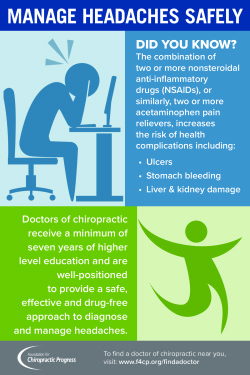Relieve Pain In The Back By Pinpointing The Day-To-Day Behaviors That Could Be Causing It; Easy Tweaks Could Transform Your Way Of Living Right Into One That Is Pain-Free
Relieve Pain In The Back By Pinpointing The Day-To-Day Behaviors That Could Be Causing It; Easy Tweaks Could Transform Your Way Of Living Right Into One That Is Pain-Free
Blog Article
Web Content Create By-Carstensen Landry
Keeping proper posture and preventing common risks in daily tasks can dramatically affect your back health and wellness. From how you sit at your workdesk to exactly how you raise heavy objects, tiny adjustments can make a large difference. Imagine a day without the nagging pain in the back that impedes your every move; the option may be easier than you think. By making a few tweaks to your daily behaviors, you could be on your means to a pain-free existence.
Poor Stance and Sedentary Lifestyle
Poor posture and an inactive lifestyle are two major contributors to neck and back pain. When you slouch or hunch over while sitting or standing, you put unneeded stress on your back muscles and spinal column. This can cause muscle mass discrepancies, stress, and at some point, chronic pain in the back. Furthermore, sitting for long periods without breaks or exercise can compromise your back muscular tissues and result in stiffness and discomfort.
To combat bad stance, make a mindful initiative to sit and stand up straight with your shoulders back and aligned with your ears. Keep in mind to keep your feet level on the ground and stay clear of crossing your legs for prolonged durations.
Including routine extending and strengthening workouts right into your day-to-day regimen can also help boost your posture and alleviate neck and back pain associated with an inactive way of living.
Incorrect Training Techniques
Improper training strategies can substantially contribute to pain in the back and injuries. When you lift hefty items, bear in mind to bend your knees and utilize your legs to lift, instead of counting on your back muscles. Avoid twisting your body while training and maintain the things near to your body to lower strain on your back. It's crucial to maintain a straight back and prevent rounding your shoulders while raising to avoid unneeded stress on your spine.
Always examine the weight of the object before raising it. If dr steven schramm 's also hefty, request assistance or usage tools like a dolly or cart to carry it securely.
Keep in mind to take breaks throughout raising jobs to give your back muscle mass a chance to rest and stop overexertion. By carrying out appropriate training strategies, you can protect against back pain and decrease the danger of injuries, ensuring your back stays healthy and strong for the long-term.
Lack of Normal Exercise and Extending
A sedentary way of living without normal exercise and extending can significantly add to back pain and pain. When you don't participate in physical activity, your muscles come to be weak and inflexible, causing bad position and enhanced pressure on your back. Routine exercise helps strengthen the muscular tissues that sustain your spine, enhancing security and decreasing the danger of pain in the back. Including stretching into your routine can additionally improve versatility, protecting against stiffness and discomfort in your back muscle mass.
To stay clear of back pain brought on by an absence of workout and extending, aim for a minimum of 30 minutes of modest exercise most days of the week. Include cupping for bronchitis that target your core muscular tissues, as a solid core can help relieve stress on your back.
Furthermore, take breaks to extend and relocate throughout the day, especially if you have a workdesk task. Easy stretches like touching your toes or doing shoulder rolls can aid soothe stress and protect against back pain. Focusing on regular exercise and stretching can go a long way in preserving a healthy and balanced back and lowering pain.
Conclusion
So, keep in mind to sit up right, lift with your legs, and remain active to stop pain in the back. By making simple adjustments to your day-to-day practices, you can prevent the discomfort and restrictions that feature neck and back pain. Look after your back and muscles by practicing good stance, proper training methods, and routine workout. Your back will certainly thank you for it!
